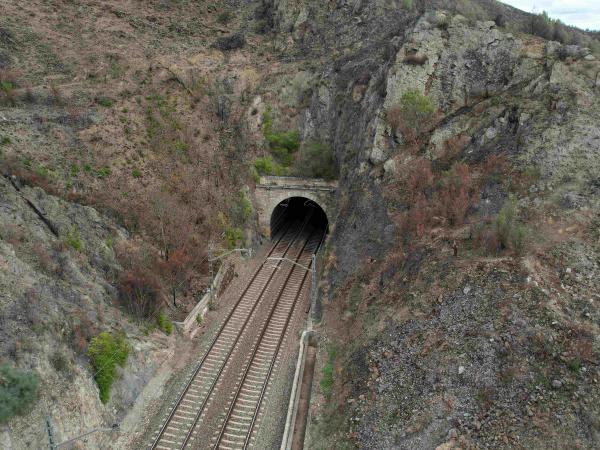


Convensa wins the contract to adapt the Madrid-Zaragoza section to the Autopista Ferroviaria services
Convensa wins the contract to adapt the Madrid-Zaragoza section to the Autopista Ferroviaria services

Convensa has won the contract to adapt the Madrid-Zaragoza section to future Autopista Ferroviaria (AF) services on the Algeciras-Zaragoza route. The works involve the adaptation of the railway gauge of tunnels and overpasses to the dimensions required by the semi-trailers that will use the AF service between Madrid and Zaragoza. The investment amounts to 78 million Euro and work will be carried out in 40 overpasses and 26 tunnels on the conventional line, located in the provinces of Madrid, Guadalajara, Soria and Zaragoza. Specifically, work will be carried out on the infrastructure, such as enlarging the section of tunnels and lowering the platform; and the superstructure, with the renovation of sleepers, rails and ballast, as well as drainage and electrification works.
The adaptation of the gauge in the tunnels and overpasses located between San Fernando de Henares and Santa María de Huerta (Soria) will be carried out by the consortium formed by Convensa and other companies.
On the Algeciras-Zaragoza route, 6 trains will run daily (three in each direction) with trucks from/to Morocco, plus 2 trains daily (one in each direction) from Huelva to Zaragoza, with trucks from/to the Canary Islands and the area around Huelva; and another 4 trains daily (two in each direction) from Seville-Zaragoza, with trucks from/to the Port of Seville and Andalusia.
In this way, approximately 12,000 train-kilometres will be covered daily and some 360 lorries will be transported on this route, avoiding 360,000 km of lorry traffic on the road per day.
The services of the Algeciras-Zaragoza AF will be continued from Zaragoza to Tarragona, via Lleida, a section that links the main production and consumption nodes of the Iberian Peninsula, Madrid and Barcelona, and forms part of the flows from the centre and south with the north-east of Spain and the rest of Europe.
This line, the one with the highest demand in the whole railway network, with more than 100 circulations per week in each direction, will also make possible future services on the routes from Vitoria to Tarragona and Barcelona, taking advantage of the synergies between maritime and railway transport.

